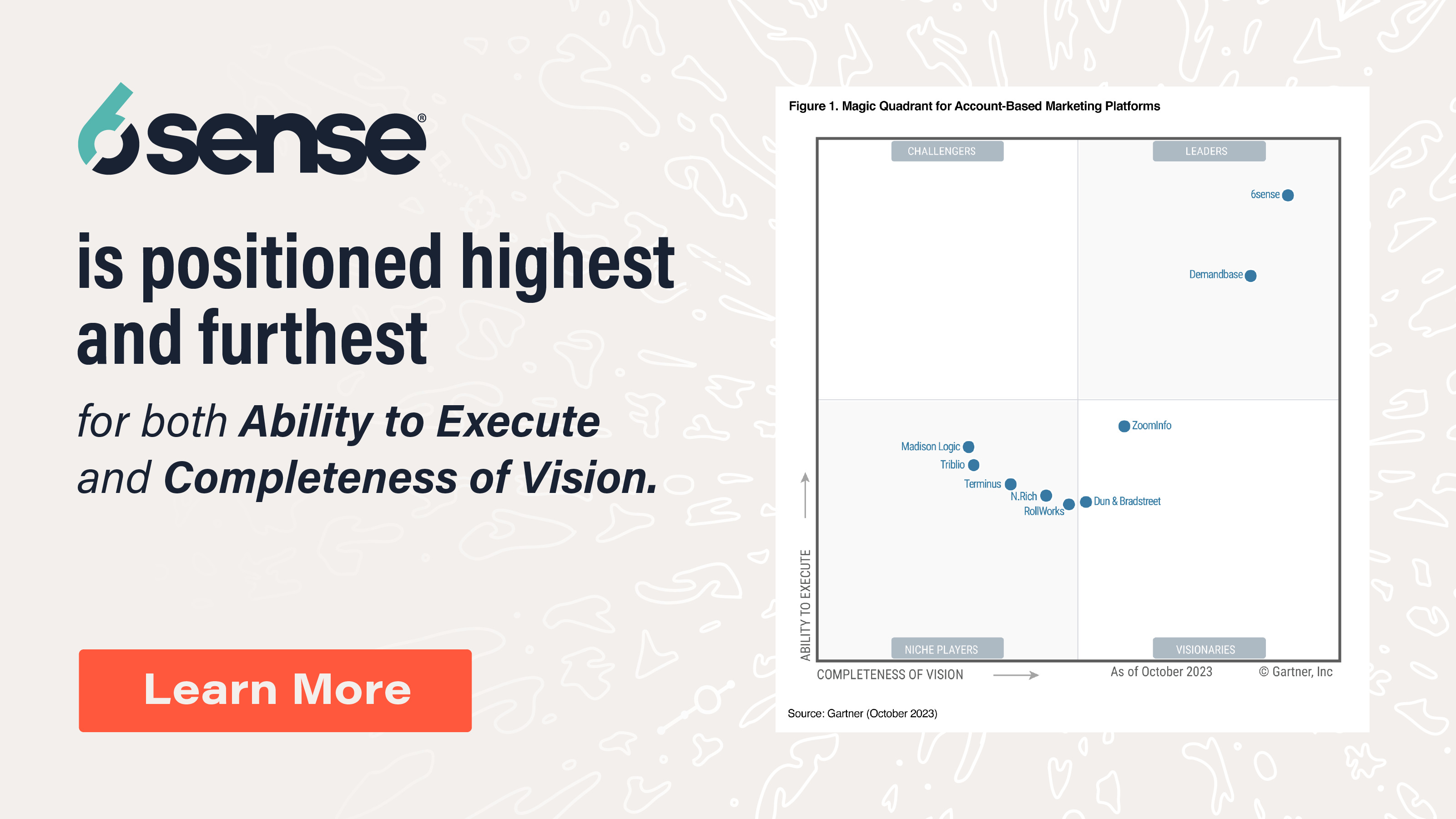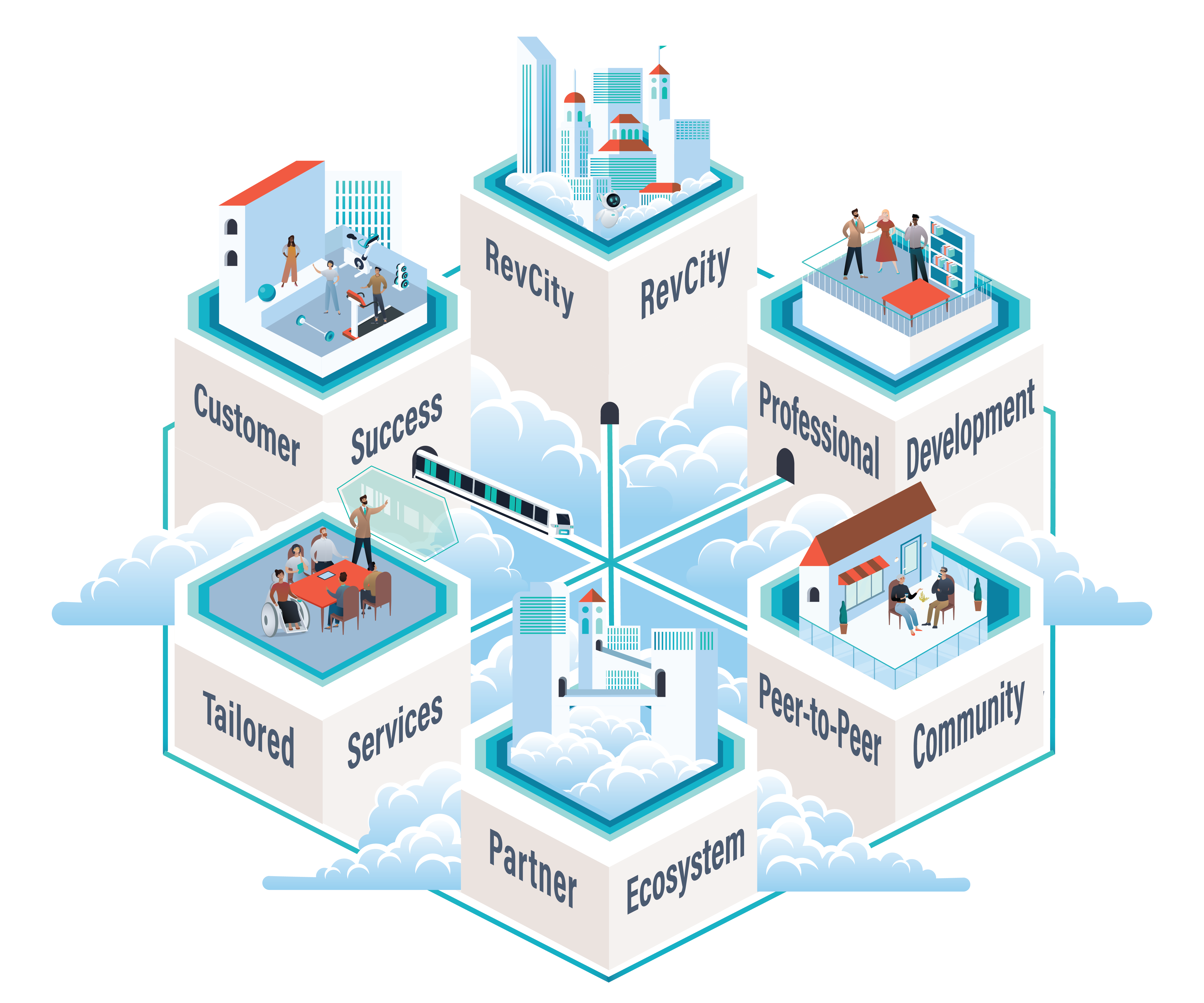What is lead qualification? Lead qualification is the process by which sales and marketing teams identify if the lead or the prospect is a good fit for your product or service. This process also helps in determining how likely it is for a prospect to make a purchase.
Why is lead qualification important? It saves time. It saves effort. It saves sales and marketing teams from feeling confused about which leads to pursue.
By qualifying leads, sales teams can prioritize leads that are more likely to result in successful deals, thus maximizing their efficiency and productivity.
In this guide, we’ll show you examples of effective lead qualification by breaking down five well-known lead qualification frameworks—BANT, CHAMP, ANUM, MEDDPICC, and GPCTBA/C&I. We’ll also provide a lead qualification template to help you imagine how you’d use one of these frameworks to evaluate your leads.
Let’s begin.
Jump to Topic
• Overview of the BANT Framework
• Overview of the CHAMP Framework
• Overview of the ANUM Framework
• Overview of the MEDDPICC Framework
• Overview of the GPCTBA/C&I Framework
• Lead Qualification Framework Templates
Overview of the BANT Framework
The BANT framework, originally pioneered by IBM, brings clarity to lead qualification by breaking it down into four essential criteria: Budget, Authority, Need, and Timing.
With these factors in play, sales professionals can accurately gauge the potential of a lead and make informed decisions about their sales strategy. Let’s delve into each of these components to grasp how they come together to create a powerful tool for lead qualification.
Budget
Does the potential customer have the means to invest in your product or service? Should their budget fall short of alignment with your offering, further pursuit might be futile.
Sample questions to ask leads about their budget:
- Can you provide an estimate of the budget set aside for this project?
- Where does this initiative rank in terms of budget allocation compared to other projects?
- Based on your understanding of our solution’s benefits, do you believe it aligns with your budget expectations?
- What potential challenges do you anticipate in getting budget approval for this project?
Authority
While your contact might show interest, understanding the decision-making hierarchy within their organization is essential. Even if your contact is enthusiastic, others might play a role in final approvals. Discover the extent of their decision-making authority and, if necessary, encourage involving key stakeholders for a smoother process.
Sample questions to ask leads about their authority:
- Is there anyone else within your organization who needs to be part of our discussions?
- Would it be beneficial for us to engage with other key stakeholders in your organization to make sure their needs and concerns are addressed?
- How closely do your colleagues align with your assessment of the solution’s potential benefits?
- Is there a preference within your organization for building consensus before making such decisions?
Need
The heart of lead qualification lies in addressing pain points. Can your product genuinely address your prospect’s challenges? Delve into their most pressing concerns and past efforts at resolution. If your solution isn’t an appropriate fit, it’s best to redirect your efforts elsewhere.
Sample questions to ask leads about their need:
- What are the most critical pain points you’re trying to address with a solution like ours?
- From your perspective, how well do you think our product can address the challenges you’ve mentioned?
- Are there any lessons or insights from your past attempts that you believe can guide us in tailoring our solution to your needs?
- Are there any specific metrics or key performance indicators (KPIs) that you would use to measure the success of our solution in your context?
Timeline
Urgency often defines the trajectory of sales. How soon does your prospect intend to finalize the purchase? By gauging their timeframe, you can align your efforts effectively. Short-term commitments are promising, while longer horizons might necessitate follow-ups and strategies to create a sense of immediacy.
Sample questions to ask leads about their timeline:
- When do you envision having a solution in place to address your current challenges?
- Are there any upcoming events, initiatives, or changes that are influencing the urgency of this decision?
- Are there any potential factors or obstacles that might extend the decision-making timeline for this project?
- What would be the preferred mode and frequency of communication as we move forward in the decision-making process?
Overview of the CHAMP Framework
The CHAMP lead qualification framework is similar to the BANT framework in that it focuses on critical aspects to assess the suitability of a lead for a B2B solution. However, CHAMP strongly emphasizes the challenges and priorities of the lead.
CHAMP looks at each lead’s Challenges, Authority, Money, and Prioritization to
determine their potential as a qualified lead. Let’s break down each component of the CHAMP framework.
Challenges
CHAMP starts by examining the challenges and pain points that a lead is currently facing within their organization. Understanding these challenges is crucial because your solution must address these issues directly to provide value. By identifying the specific pain points, you can tailor your communication to showcase how your product or service can effectively alleviate those challenges.
Sample questions to ask leads about their challenges:
- What specific obstacles are hindering your company’s growth or performance?
- What sort of consequences do you anticipate if these challenges are not effectively addressed?
- What were the outcomes of previous attempts to address these pain points?
- Are there any quantifiable metrics or KPIs that would indicate progress?
Authority
CHAMP also acknowledges the significance of engaging with leads who have the power to greenlight purchases. However, B2B decisions often involve multiple stakeholders with varying levels of authority. By identifying and engaging with all relevant decision-makers and influencers, you increase the chances of a smoother decision-making process.
Sample questions to ask leads about authority:
- Are specific departments or individuals usually involved in evaluating and approving such purchases?
- How do you usually manage differing viewpoints or preferences among the stakeholders?
- What is the preferred mode of communication for different decision-makers and influencers?
- Are there specific times or contexts when it would be best to involve these stakeholders in our discussions?
Money
Financial priorities form the backbone of B2B transactions. In the realm of CHAMP, money takes center stage by unveiling the budget allocation and its availability. But it’s not just about numbers. It’s also about showcasing the ROI your solution promises. By quantifying the impact, you resonate with the practicality that decision-makers seek.
Sample questions to ask leads about money:
- Are there any specific financial constraints or parameters that we should be aware of?
- How do you envision our solution contributing to your organization’s bottom line or overall efficiency?
- Are there certain areas where you’re more inclined to allocate resources based on their potential impact?
- What factors or information would help you feel confident in making an investment of this size?
Prioritization
‘Prioritization’ within CHAMP emphasizes timelines as a linchpin in your strategy. Understanding when a lead or prospect aims to initiate implementation provides insights into their urgency. Be it the fiscal quarter’s closure or a broader timeline, understanding prioritization guides your approach.
Sample questions to ask leads about prioritization:
- Are there specific reasons why addressing these challenges has become a priority now?
- What impact do you anticipate achieving by addressing these challenges within your chosen timeline?
- Are there certain stages or checkpoints within your organization that need to be considered when setting a timeline?
- Have you encountered challenges in the past that caused delays in implementing similar solutions?
Overview of the ANUM Framework
Crafted by Ken Krogue as an evolved rendition of the BANT framework, the ANUM framework has four core pillars: Authority, Need, Urgency, and Money.
It provides a modern approach to lead qualification, addressing key aspects for successful B2B sales. Here’s a breakdown of each core pillar of the ANUM framework.
Authority
ANUM starts by underlining the significance of engaging decision-makers and stakeholders with the authority to drive purchase decisions. This involves understanding who can give the final approval for the purchase and who holds influence over the decision. Engaging with the right decision-makers ensures your efforts align with those who can drive the purchase forward.
Sample questions to ask leads about authority:
- Who typically holds the final approval for purchases and decisions related to solutions like ours?
- Could you help me understand the roles and responsibilities of different stakeholders involved in this process?
- How do decisions like this move through different levels of the organization?
- What strategies have you found successful to make sure all relevant stakeholders are on board with decisions like this?
Need
Like the “Need” component in other frameworks, the “Need” pillar of ANUM emphasizes understanding the pain points and challenges the lead is experiencing. Uncovering their needs can position your solution as a valuable resource that directly addresses their concerns.
Sample questions to ask leads about needs:
- Are there specific features or functionalities you’re looking for in a solution?
- Are there any critical areas where you believe our solution could make a significant difference?
- Can you provide examples of situations where these areas have caused difficulties?
- Have you previously tried any solutions or strategies to address these challenges?
Urgency
Factors such as upcoming projects, business goals, or external events can influence the sense of urgency. By aligning your efforts with their timeline, you can address their immediate needs effectively.
Sample questions to ask leads about urgency:
- What is the timeframe within which you’re looking to implement a solution to address your challenges?
- Have you encountered any external factors that have accelerated the need for addressing these challenges?
- Based on your timeline, how do you anticipate the steps from decision to implementation unfolding?
- Are there any potential obstacles or considerations that might affect the timeline?
Money
The “Money” pillar focuses on the financial aspect of the decision-making process. It involves understanding the lead’s budget, resource allocation, and the financial viability of the solution within their organization. Demonstrating the potential ROI and showcasing the financial benefits of your solution can help build a compelling case for its adoption.
Sample questions to ask leads about money:
- How have budgetary considerations influenced your approach to exploring solutions?
- Are there specific metrics or outcomes you’d associate with a successful investment in our solution?
- How do you see our solution fitting into your organization’s financial strategy?
- Are there any additional resources or approvals you need to secure to proceed with this budget?
Overview of the MEDDPICC Framework
The MEDDPICC framework provides a holistic approach to lead qualification by addressing both qualitative and quantitative factors.
By delving into each component — Metrics, Economic Buyer, Decision Criteria, Decision Process, Paper Process, Identify Pain, Champion, and Competition — sales teams can tailor their strategies, engage with the right stakeholders, and present solutions that resonate with the lead’s specific needs and challenges.
Here’s a breakdown of each element in the MEDDPICC framework.
Metrics
This step involves identifying and understanding the KPIs the potential customer values and uses to measure success. What metrics matter most to them? By aligning your solution with their metrics, you can showcase how your offering directly contributes to their goals.
Sample questions to ask leads about metrics:
- How do you envision our solution impacting the metrics that drive your organization’s success?
- Are there any quantifiable targets you hope to achieve by implementing a solution like ours?
- What trends or changes in these metrics would signal a successful adoption of our solution?
- Are there any industry benchmarks or standards your organization strives to meet through solutions like ours?
Economic Buyer
The economic buyer holds the power to allocate budget and resources for the solution. Identifying and understanding this decision-maker’s concerns and priorities is pivotal to tailoring your approach effectively.
Sample questions to ask leads about the economic buyer:
- Who typically holds the authority within your organization to make budgetary decisions for solutions like ours?
- How do the decision-makers’ priorities align with the overall strategic direction of your organization?
- Have you encountered any challenges in the past getting buy-in from decision-makers for similar solutions?
- Are there any common concerns or objections that decision-makers typically raise?
Decision Criteria
Aim to understand the criteria that the potential customer uses to evaluate and choose a solution. What factors are most important to them? By tailoring your pitch to address their specific decision criteria, you increase your chances of resonating with their needs.
Sample questions to ask leads about the decision criteria:
- Could you share the specific attributes or functionalities crucial for you when considering options?
- How do you typically prioritize and weigh different criteria during your evaluation?
- What past experiences or lessons have shaped your criteria to evaluate solutions?
- How do you communicate the importance of these decision criteria to other stakeholders involved?
Decision Process
This aspect involves grasping the steps and stakeholders involved in the decision-making process. How does the potential customer make decisions? Who else is part of the decision-making team? Understanding the process helps you navigate the complexities of their organization.
Sample questions to ask leads about the decision process:
- How do decisions like this move through different levels of your organization?
- Can you provide insights into the role of each stakeholder within the decision-making team?
- Are there any instances where involving certain stakeholders early in the process made a significant impact?
- How do you make sure all relevant stakeholders are kept informed and engaged throughout the evaluation of our solution?
Paper Process
The paper process refers to the internal procedures and processes that a potential customer’s organization follows when making purchasing decisions. This could involve legal, compliance, or other internal protocols that must be adhered to.
Sample questions to ask leads about the paper process:
- Are there specific legal or compliance requirements that your organization needs to fulfill during the purchasing process?
- Are there any potential roadblocks or challenges that you foresee in terms of adhering to your organization’s paper process?
- How do you anticipate our solution aligning with your organization’s internal procedures?
- What strategies have you found effective in streamlining the paper process for similar solutions?
Implications
This part is about digging into the implications of the lead not taking action or addressing their challenges. What negative consequences might arise if they don’t implement a solution? Presenting these implications underscores the urgency of your offering.
Sample questions to ask leads about implications:
- What risks or downsides could your organization face if a solution isn’t implemented?
- How do you envision these challenges affecting your team’s productivity or efficiency?
- How would the absence of a solution impact your organization’s competitive position in the market?
- Are there any compliance or regulatory risks associated with not addressing these challenges?
Champion
A champion is an internal advocate within the potential customer’s organization who champions your solution. Developing a strong relationship with the champion can facilitate garnering support for your offering and help to navigate the internal dynamics that influence the decision-making process.
Sample questions to ask leads about the champion:
- Could you provide insights into the roles and responsibilities of individuals who typically support the introduction of new solutions?
- How does the role of these influential individuals align with the decision-making process?
- What motivations might someone have for supporting the implementation of a solution like ours?
- How do you envision these individuals collaborating with other stakeholders during the decision-making process?
Competition
Identifying competitors and differentiating your offering empowers you to address the lead’s concerns and showcase the unique advantages of your solution. What alternatives are they considering? How does your solution stand out from the competition?
Sample questions to ask leads about the competition:
- What features or capabilities do you see as important differentiators when comparing solutions?
- Are there specific areas where you believe our solution might excel compared to the competition?
- What criteria do you use to assess the strengths and weaknesses of different options?
- What information or insights would help you better understand how our solution stands out from the competition?
Overview of the GPCTBA/C&I Framework
The GPCTBA/C&I framework is a comprehensive approach to lead qualification that addresses a spectrum of crucial factors in the B2B sales process. The acronym GPCTBA/C&I stands for Goals, Plans, Challenges, Timeline, Budget, Authority, Consequences, and Implications.
This framework equips sales teams with the tools to thoroughly understand a lead’s requirements, align strategies, and present solutions that align with their needs and objectives.
Here’s a breakdown of each element of the GPCTBA/C&I framework.
Goals
This step involves understanding the lead’s overarching objectives and what they aim to achieve with a potential solution. By grasping their goals, you can tailor your approach to demonstrate how your offering aligns with their aspirations.
Sample questions to ask leads about goals:
- Could you share your organization’s primary objectives in the coming months or quarters?
- How do these objectives align with your team’s or department’s goals?
- Are there any measurable targets you’re striving to achieve that would benefit from a solution like ours?
- What strategies have you considered or used in the past to achieve similar goals?
Plans
Here, you delve into the prospect’s strategies and plans for achieving their goals. What steps are they planning to take? How does your solution fit into their strategy? By understanding their strategies and initiatives, you can tailor your communication to highlight how your solution supports their process.
Sample questions to ask leads about plans:
- Are there specific milestones or targets within your strategic plans that would benefit from our solution?
- What criteria do you use to evaluate the compatibility of external solutions with your strategic objectives?
- What resources or changes do you anticipate allocating to support the execution of these plans?
- Can you share experiences from past initiatives where solutions like ours played a role in achieving strategic objectives?
Challenges
You can strategically position your solution by delving into the challenges and pain points the lead is currently grappling with. What hurdles are hindering their progress? How can your solution address these challenges? The answers to those questions form the foundation for presenting your solution as a tailored remedy to their unique circumstances.
Sample questions to ask leads about challenges:
- Could you outline the key challenges your team currently faces in achieving its objectives?
- Are there any recurring obstacles that have hindered progress in achieving your objectives?
- Have you explored any solutions or strategies in the past to mitigate these challenges?
- Are there any internal or external factors increasing these challenges that we should be aware of?
Timeline
Understanding the lead’s timeline for implementing a solution is crucial. When do they intend to implement a solution? Are there any urgent timeframes or constraints? By aligning your efforts with their schedule, you can align your sales strategy with their timeline and present strategies that resonate with their urgency.
Sample questions to ask leads about the timeline:
- Within what timeframe are you looking to implement a solution to address your challenges?
- Are there any specific milestones or events that influence the timing of your solution adoption?
- How does the timeline for implementing a solution align with your team’s broader objectives?
- Are there any potential roadblocks or considerations that might affect the implementation timeline?
Budget
The budget aspect involves understanding the financial resources allocated for addressing their challenges and achieving their goals. Does your solution align with their budget? Can you demonstrate a clear return on investment? You can build a compelling case by aligning your solution with their budget constraints and demonstrating its value.
Sample questions to ask leads about budget:
- How have budgetary considerations influenced your approach to exploring solutions like ours?
- Are there specific financial constraints or guidelines that you need to adhere to?
- What criteria do you use to evaluate the financial viability of potential solutions?
- Are there potential ROI expectations that you associate with investing in a solution?
Authority
This step revolves around identifying the decision-makers within the prospect’s organization. Who holds the authority to make purchase decisions? By identifying key stakeholders and decision-makers, you can tailor your approach to resonate with those who can drive the purchase forward.
Sample questions to ask leads about authority:
- Could you provide insights into the roles and responsibilities of individuals involved in the decision-making process?
- How do decisions move through different levels of your organization?
- What strategies have you found successful in ensuring all relevant stakeholders are aligned with decisions like this?
- Are there instances where involving certain stakeholders early in the process has positively impacted decision outcomes?
Consequences & Implications
Lastly, consider the consequences and implications of not addressing their challenges or not achieving their goals. What impact will it have on their business if they don’t take action? Presenting these implications underscores the urgency of your solution.
Sample questions to ask leads about consequences and implications:
- What do you foresee as potential negative consequences if your current challenges remain unaddressed?
- Are there specific risks or drawbacks associated with not implementing a solution?
- What positive implications could arise from adopting a solution like ours?
- Could you share instances where implementing similar solutions led to notable positive outcomes?
Lead Qualification Framework Templates
Here’s an example template to help you apply one of the frameworks to your lead qualification process.
Lead Qualification Framework: [Choose one – BANT / CHAMP / ANUM / CHAMP / MEDDPICC / GPCTBA/C&I]
Prospect Information
Name:
Company:
Position:
Contact Information:
Source:
Guidelines
Understand the Framework: Familiarize yourself with the core principles and components of the chosen lead qualification framework.
Listen Actively: During conversations, pay close attention to the prospect’s responses, pain points, and priorities.
Ask Open-ended Questions: Encourage prospects to share details by asking questions that prompt elaboration.
Tailor Your Approach: Use the framework to guide your conversation while adapting to the prospect’s unique context.
Provide Value: Offer insights, solutions, and information that align with the prospect’s needs and challenges.
Build Rapport: Establish a strong rapport by showing genuine interest in the prospect’s goals and concerns.
Evaluate Qualification Criteria: Assess whether the prospect meets the criteria outlined in the framework components.
Score Each Component: Assign a numerical score to each component based on the prospect’s responses and fit.
Calculate Total Score: Sum up the scores for each component to calculate the total lead qualification score and determine the lead’s qualification level.
Take Next Steps: Based on the qualification level, decide on appropriate next steps, such as scheduling a demo, sending more information, or nurturing the lead further.
Scoring Criteria
0-25: Low Fit
26-50: Moderate Fit
51-75: Good Fit
76-100: High Fit
BANT Lead Qualification Template Example
Here’s an example of how you’d use the BANT lead qualification framework with the template above.
Prospect Information
Name: John Smith
Company: XYZ Enterprises
Position: Director of Revenue Operations
Contact Information: Email: [email protected], Phone: (123) 456-7890
Source: Website Contact Form
Budget
Guidelines: Understand John’s budgetary constraints and how much he’s willing to invest in a solution.
Tips: Frame budget-related questions in a non-invasive manner. Focus on understanding his budget range and any financial considerations.
Scoring Criteria: Allocate up to 25 points based on John’s willingness to allocate a budget for a solution.
Authority
Guidelines: Determine John’s decision-making authority within his organization and identify other stakeholders involved in the decision.
Tips: Use conversational cues to gauge John’s role in final purchasing decisions and inquire about key stakeholders.
Scoring Criteria: Allocate up to 25 points based on John’s authority and ability to involve relevant stakeholders.
Need
Guidelines: Explore the specific challenges and pain points John’s company faces, and assess if your solution can address them.
Tips: Ask open-ended questions about current challenges and listen for cues indicating a genuine need for your solution.
Scoring Criteria: Allocate up to 25 points based on the alignment between your solution and John’s identified needs.
Timeline
Guidelines: Understand John’s timeline for implementing a solution and any urgency related to addressing current challenges.
Tips: Inquire about key milestones, deadlines, or events that influence the timeline for solution implementation.
Scoring Criteria: Allocate up to 25 points based on John’s timeline and urgency for implementing a solution.
Total BANT Score
Calculate the total score and interpret it based on the scoring criteria:
- 0-25: Low Fit
- 26-50: Moderate Fit
- 51-75: Good Fit
- 76-100: High Fit
Next Steps
Based on the total BANT score, outline the recommended next steps in the lead nurturing process.
Let’s Sum Up Lead Qualification
Lead qualification isn’t just a preliminary task. It’s the cornerstone of success for businesses that want to identify leads that hold the potential to evolve into long-lasting partnerships.
With the right framework and questions, you’ll be well-equipped to sift through the noise, zero in on high-potential prospects, and nurture them into devoted clients.
As you begin qualifying leads, consider exploring 6sense. Whether you’re in the early stages of lead qualification or ready to close the deal, 6sense equips you with the data-driven power to thrive in B2B marketing and sales.
To learn more about 6sense’s capabilities, book a demo.






